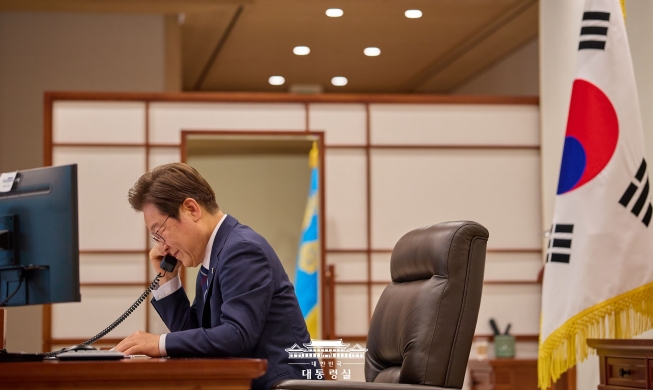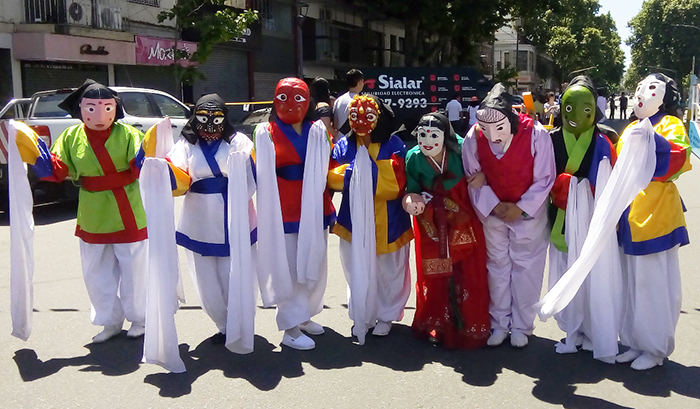
A variety of Korean cultural events are held on Nov. 4 in Buenos Aires. (Cintia Mancilla)
By Korea.net Honorary reporter Cintia Mancilla from Argentina
A major festival returned to Buenos Aires on Nov. 4 to celebrate Korean culture in the city’s Flores district. The Buenos Aires Celebra program supports diversity-promoting events in the Argentine capital through which ethnicities from a range of countries can share their traditions and heritage.
This was my second time going to the Korean festival, thus I was eager to see what the event would bring this time. Previous editions saw crowded streets full of excitement, fueling my anticipation.
I quickly learned that going early was the best option for seeing every stand with less stress. Visitors upon arrival received a brochure to fill with stamps at select stands. Collection of 10 stamps secured eligibility for a prize drawing.
A cool thing was a large banner on which people could draw or write whatever they wanted about their fondness for Korea. Many stands also gave out small gifts.
One major draw of the festival was food. Visitors flocked to the stands with Korean and Asian cuisines, and many even dared to eat uber-spicy dishes based on three levels of spiciness.
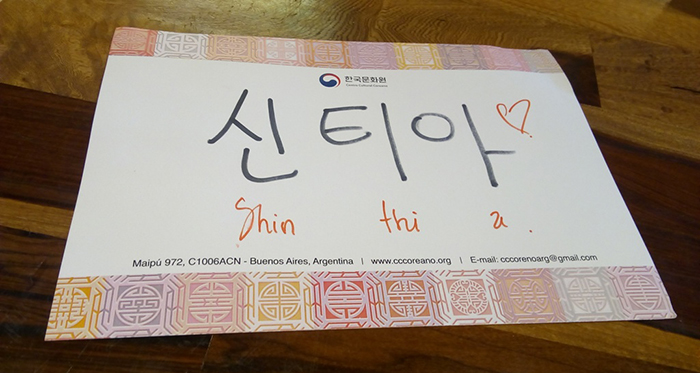
Visitors to the event had a chance to write in Hangeul, the Korean alphabet. (Cintia Mancilla)
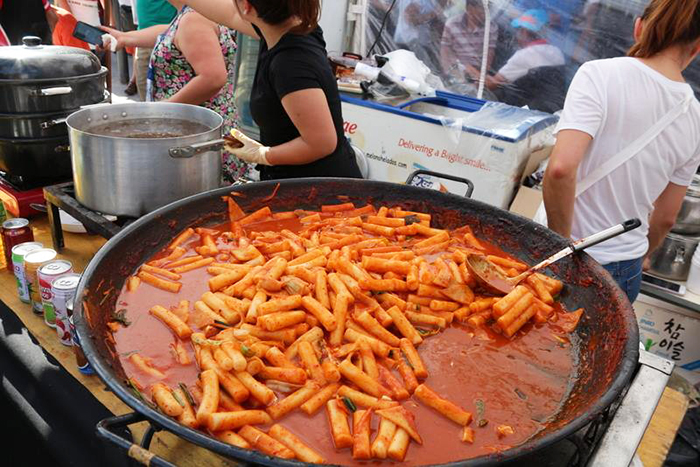
Tteokbokki (spicy rice cake) is a can’t-miss snack at Korean cultural events. (Korean Cultural Center in Argentina)
Leading Korean dishes there included bibimbap (rice mixed with red pepper paste and vegetables), japchae (glass noodles with fried vegetables), jokbal (pig's feet cooked in soy sauce), gimbap (rice roll), kimchi, tteokbokki (rice cake covered in red pepper sauce) and patbingsu (dessert of red beans and fruit on ice shavings). I ate bulgogi (stir-fried marinated beef) with rice and loved it; it was my type of food. As a beginner in Korean food, I chose the least spicy dish.
What Korean festival wouldn’t be complete with fun and games? Traditional games featured at the event were yutnori (four-stick board game), tuho (arrow throwing) and jegichagi (shuttlecock kicking); I found the latter game extremely difficult. I’ve never kicked the shuttlecock more than twice when playing this game, but my friend is far better. At least I received a notebook and candy as gifts. A ssireum (wrestling) competition also allowed visitors to try their luck on the mat.
A street parade marked the official opening of the festival. The event also featured two stages, the smaller one for K-pop performances running all day. The main stage presented more traditional fare like buchaechum (fan dance), the agricultural percussion group samulnori, sipalki (an old Korean martial art meaning “18 techniques”), taekwondo demonstrations and K-pop performances.
Due to ever-growing Argentine interest in Hallyu, the Korean festival in Buenos Aires has grown bigger and better with every passing year.
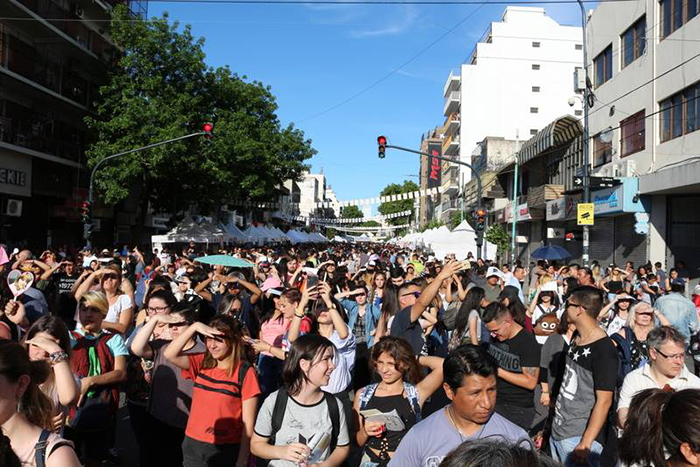
The annual Korean cultural festival on Nov. 4 in Buenos Aires attracts hordes of visitors. (Korean Cultural Center in Argentina)
wisdom117@korea.kr
* This article is written by a Korea.net Honorary Reporter. Our group of Honorary Reporters are from all around the world, and they share with Korea.net their love and passion for all things Korean.
